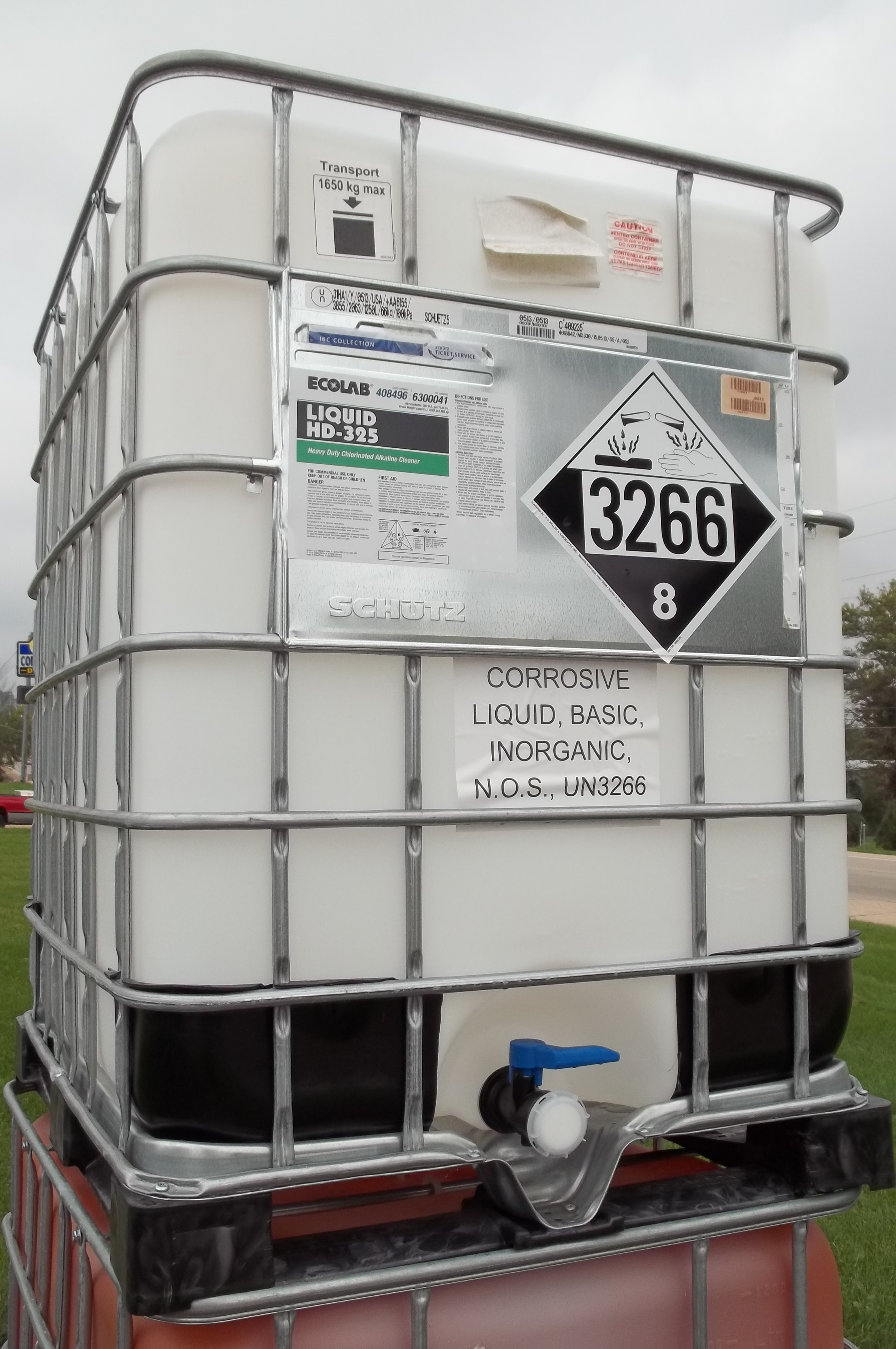Question (March 03, 2018):
Sir, my company routinely ships HazMat totes 275-over 300 gallons that have UN numbered placards on two sides on freight trailers that are placarded that don’t have the UN number, like the kind used for packaged HazMat.
But,,,I remember from HazMat class at previous jobs that if there’s a UN number on the tote, it’s a bulk container and needs bulk placards with that UN number on all four sides of the truck.
Is this correct..?,, because this is the case often in freight companies, even the supervisors don’t know.
They say that no where does it say it’s illegal to use standard placards for bulk container transportation.
Note: An image of an intermediate bulk container (IBC) was included as an attachment to the email. A Class 3 Flammable Liquid placard with the identification number of (UN)1170 was visible on one side.
My reply (March 05, 2018):
Thank you for contacting me. Please see below.
- The packaging you describe and the image shown is an intermediate bulk container (IBC).
- The Hazardous Materials Regulations allow for many options for the display of labels, placards, and package marks on an IBC of this size. Read: HazMat Labels, Placards, and Marks on an IBC. However, in one form or another the identification number must be displayed on the IBC.
- Per 49 CFR 172.331(c) when a bulk packaging like an IBC is contained in or on a transport vehicle the identification number marking on the IBC must be visible or the transport vehicle must be marked with the identification number on each side and each end.
- Per 49 CFR 172.332, the identification number mark on a transport vehicle may be displayed in one of three ways:
- On the placard (172.332(c)).
- On an orange panel near the placard (172.332(b)).
- On a white square-on-point near the placard (172.336(b)).
I hope this helps. Please contact me with any other questions.
Contact me with any questions you may have about the transportation of hazardous materials by air, highway, vessel, or rail International and Domestic Daniels Training Services, Inc. 815.821.1550 |
His reply the next day (speaking some truth):
Daniel,,,,,,,, Thank You very much for the info. I forwarded this to my terminal manager.
You would be surprised to know how many freight drivers (City and shuttle drivers) do not follow the hazMat regs.
I have worked in fuel and oil jobs in the past. But in many cases Freight Companies hire drivers with zero HazMat experience and the company does not provide any HazMat training.
Well, maybe on paper, but not in actuality.
Conclusion:
Beware the things that “everyone knows to be true” about the Hazardous Materials Regulations (HMR) of USDOT/PHMSA. Sometimes what everybody knows turns out to be wrong. The correct answer can only be found in the HMR. You – or your employees – may contact me directly to get the answers to these questions or you could get your questions answered and fulfill the training requirements of the HMR by attending my HazMat Employee training.

